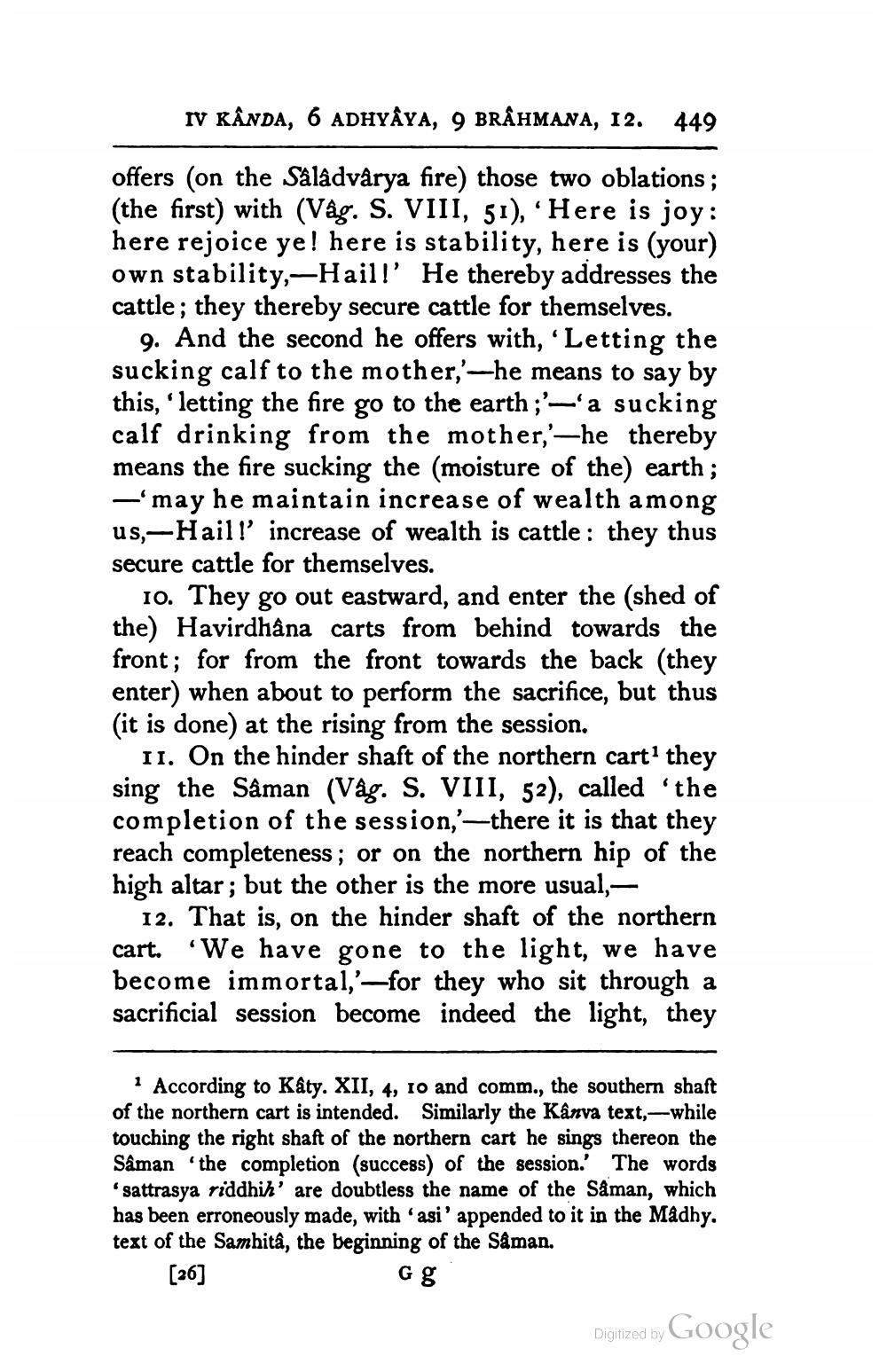________________
IV KÂNDA, 6 ADHYAYA, 9 BRÂHMANA, 12. 449
offers (on the Sâlâdvârya fire) those two oblations ; (the first) with (Vậg. S. VIII, 51), *Here is joy: here rejoice ye! here is stability, here is (your) own stability,--Haill' He thereby addresses the cattle; they thereby secure cattle for themselves.
9. And the second he offers with, ‘Letting the sucking calf to the mother,'-he means to say by this, 'letting the fire go to the earth ;'-—'a sucking calf drinking from the mother,'—he thereby means the fire sucking the (moisture of the) earth ;
-'may he maintain increase of wealth among us-Hail!' increase of wealth is cattle: they thus secure cattle for themselves.
10. They go out eastward, and enter the (shed of the) Havirdhana carts from behind towards the front; for from the front towards the back (they enter) when about to perform the sacrifice, but thus (it is done) at the rising from the session.
II. On the hinder shaft of the northern cart1 they sing the Såman (Vág. S. VIII, 52), called the completion of the session,'—there it is that they reach completeness; or on the northern hip of the high altar; but the other is the more usual, -
12. That is, on the hinder shaft of the northern cart. 'We have gone to the light, we have become immortal,'--for they who sit through a sacrificial session become indeed the light, they
* According to Katy. XII, 4, 10 and comm., the southern shaft of the northern cart is intended. Similarly the Kanva text, —while touching the right shaft of the northern cart he sings thereon the Saman the completion (success) of the session. The words
sattrasya riddhih' are doubtless the name of the Såman, which has been erroneously made, with asi' appended to it in the Madhy. text of the Samhitâ, the beginning of the Såman.
Gg
[36]
Digitized by Google




